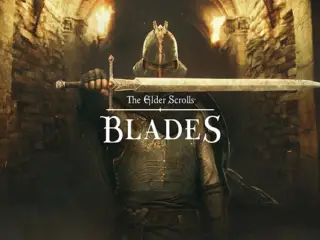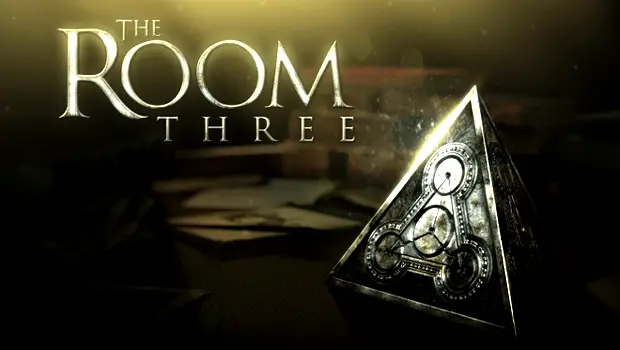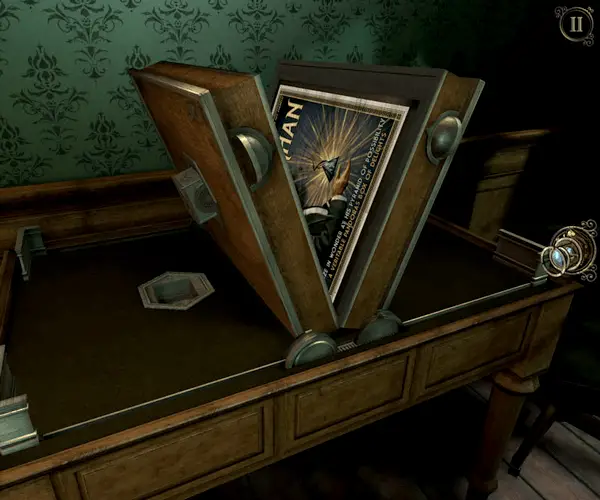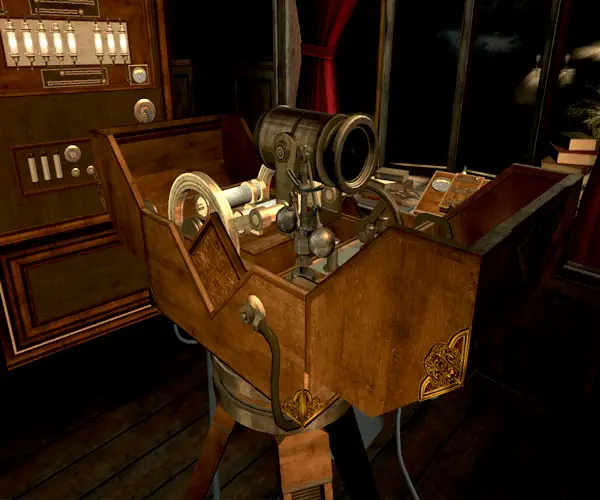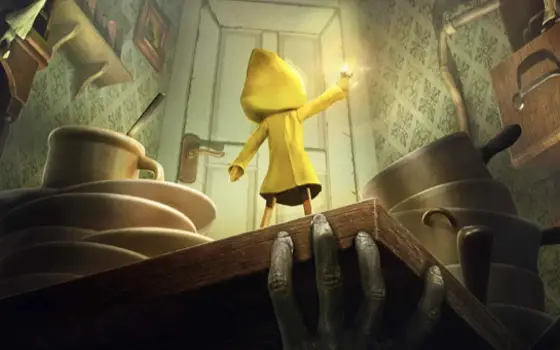When The Room first released, it seemed a misleading title because its focus was even smaller than the title implied. Essentially a series of nesting lock-boxed plastered with densely layered puzzles, it expanded inward, as its elaborate mechanisms grew ever more surreal. Its sequel expanded the concept into a series of scenes, each roughly room-sized itself, and implying little about any kind of coherent world. Now, Fireproof has outshot its title in the other direction, with their most ambitious release yet. Indeed, this is no room, but an entire manor spanning an island, where all of the game’s areas feel interconnected.
There were always shades of Myst and other first-person adventures of its era, but for the first time in the series, The Room Three finally feels like a fully-realized adventure game, with all of the depth, exploration and size that implies. In the game’s opening moments, you’ll find yourself transported to Gray Holm, a mysterious and otherworldly manor that unfolds little-by-little as you explore its puzzles, both hidden and obvious.
In every way, The Room Three is a console-quality production. Made with the Unity engine, its world is one of subtle shadows and tiny details, and it manages to not only looks as lovely as its predecessors but to do so in a much larger world. Grey Holm is dripping with atmosphere and mystery, vaguely Victorian, yet dislocated in time and space. But while it may be up to snuff visually with many modern PC/console adventures, it’s a game designed for mobile first and foremost, and plays to the platform’s strengths.
This is most apparent in the controls, which allow you to navigate on rails to key points by double-tapping, pinching to back up, and sliding your finger to pan around. This is all very intuitive and works well in the confines of the genre. More interestingly, the puzzles themselves are very touch-oriented, with, levers, switches, and latches that all have to be moved and manipulated with the finger. This lends a sense of physicality to the puzzles, as well as the objects and world to which they belong that is often lacking in similar titles, particularly among the droves of Android puzzle games that find their way onto the Play Store each month. The puzzles themselves are varied and clever, sometimes mechanical, sometimes classic “lock and key” inventory puzzles, and sometimes involve more abstract logic.
While the story, told passively through letters and notes, doesn’t do much to drive the game – and will probably make little sense at all to those that didn’t pay attention to the first two – the world itself is enough to keep things moving forward. Although there’s now an interconnected world with a central hub, the game is still broken into chapters, and each will take you to unique, self-contained areas of Gray Holm. But these chapter breaks, rather than teleporting you to exclusively to new areas, tie into the central hub that connect them.
Like its predecessors, The Room Three is not a difficult game, and in fact may even be a bit easier, thanks in part to an overly generous hint system. But unlike past games, it holds mysteries beyond what these hints reveal. Following the most direct path yields a very dark ending. Luckily, you can travel back to just before the finale to try to reach one of the other four endings, and this involves a fair bit of exploration and puzzle solving without the help of the hint system at all, which proves to be quite a satisfying challenge. All told, playing the game and then exploring one of the alternate endings took over six hours, an impressive feat for any mobile adventure.
What The Room has lost in novelty, it’s gained in depth. While The Room Two didn’t really broaden the game as it allowed players to walk around, The Room Three is the satisfying evolution it dreamed of being. Sure, it might more closely resemble the adventure genre we know and love, but it still has a distinctive flavor of puzzle design and an eerie atmosphere all its own. It’s a game that respects both the strengths of the platform and its audience, with a smart design, rich presentation, and a lengthy quest packed with content. In a landscape of ported PC games and cheap, lazy point-and-clicks, The Room Three stands as a shining beacon for what developers could be doing with mobile gaming if they only had the ambition.
Hardcore?
Very.
The Room Three may features the same mechanics and distinctive puzzles as its predecessors, but it brings them to a larger, more fully-realized world for the first time, for a lengthy, polished puzzler that is easily among the best made-for-mobile adventures to-date.














